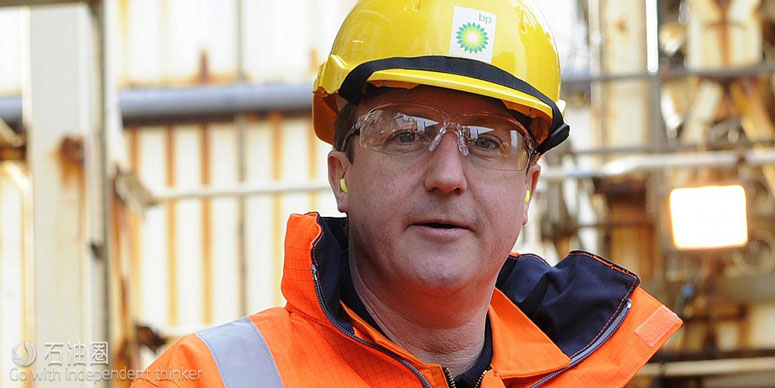The oil and gas industry has seen a slew of changes the past few years. From oil price uncertainty to technological advances, it’s fair to say the oilfield of 2017 and beyond will look far different from the oilfield of the past. But in all changes lie opportunities and challenges. A panel of industry professionals and educators convened recently to discuss how to bring back the oil and gas workforce. It’s clear there’s a lot of work to do.
Workforce Challenges in Downturn’s Aftermath
Lingering effects of the industry’s downturn are still wreaking havoc on the oil and gas workforce. A recent study by the University of Houston (UH) shed light on the potential HR nightmare – laid off workers who may never return to the industry.
The study, which surveyed more than 700 adults who lost jobs in oil and gas within the past two years, found that 62 percent of respondents were still unemployed at the time of the survey. Additionally, only 13 percent of respondents who had been reemployed were in oil and gas.
“Will those workers come back? Maybe, but there’s absolutely some evidence that we have damaged the workforce and we may not get a lot of those folks back,” Bob Newhouse, president of Newhouse Consultants and former vice president of learning and development for Noble Corporation, said during the International Association of Drilling Contractors (IADC) Health, Safety, Environment and Training Conference Feb. 7-8 in Houston.
Newhouse, who was a principal in the UH study, also pointed out some troubling labor statistics.
According to the U.S. Bureau of Labor Statistics, a massive decline in the labor force participation rate began in about 2000, said Newhouse. So while the unemployment rate is going down, there are fewer people in the workforce.
“Another negative trend we’re seeing is women leaving the workforce,” he said. “That’s attributed generally to higher education attainment. More people are staying in school longer, which is good for educators, but it’s bad for the workforce, so there’s a push-pull.”
Necessary Knowledge, Skills and Abilities
Oil and gas companies will need to focus on talent attraction as the industry recoversand job opportunities are created again. But this isn’t the oilfield of the 80s. Technologies have advanced and the workforce will need to be skilled enough to handle the changes.
Newhouse, who first worked offshore in 1982, said when he came to Noble Drilling in 2007, the rigs were pretty standard.
“None of the guys on the rig needed to know anything about computers, software, integrated systems, PLCs, cyber-based systems, data analysis, troubleshooting, VPN, cybersecurity…” Newhouse said.
Times have changed.
In the old days of the oilfield, the saying used to be ‘strong back, weak mind’ but today it’s ‘strong mind’ and nobody really cares about your back because you’re going to be sitting in a cyber chair controlling equipment through digitized controls, said Newhouse.
The real challenge comes into play when companies prepare to hire workers for the oilfield.
“Are we asking for the right skillsets from people – those who can dig into data and look for trends … are we demanding these skills coming in?” Newhouse said. “I think we’ve got a long way to go. What’s fascinating now is that data comes from everywhere. Just about every piece of equipment that is designed now will give you data on its performance and status … we’re flooded with data and starving for knowledge. We’ve got too much information and not enough knowledge.”
To ensure companies are hiring employees with the right Knowledge, Skills and Abilities (KSA), Newhouse suggests IT personnel be at the table right alongside rig managers during the hiring process.
“That’s how you develop the rig manager of the future,” he said.
Getting the Right People in the Right Positions
Some companies were strategic in managing their workforce during the downturn. For example, Noble Drilling was able to keep key employees – insulating them from layoffs in a sense – by moving them to different roles within the company.
“We’ve had people who are great drillers and had to tell them, ‘we don’t have a job for you right now, but if you’ll stay on as a derrickman, when we have a job, we’ll pull you back up,’” Angela Murphy, manager-program curriculum for Noble Drilling, told attendees of the conference.
Similarly, onshore drilling superintendents were sent offshore to be OIMs (offshore installation managers) and a mechanic transitioned to a roustabout position.
As the industry recovers and Noble looks to move workers back to their positions, the company is tasked with making sure workers are competent enough to resume their previous jobs. That’s where Noble’s new hire program got a makeover.
It used to be 18 days, but after determining what could be cut from the program, the time was cut to about five days for employees who were gone from the company for more than one year. Different criteria for the program depends on if employees were at a different company or outside of the industry altogether.
If new hires have been in their position for two to six months, they are required to wear a green hat. Other workers are able to easily identify them and are encouraged to help them out.
“It’s an easy way for us to identify where they’re at in the process and through on-the-job training, we walk them through anything they’ll need to know before moving to a blue hat position,” Murphy said. “The decision to move a new hire from a green hat to a blue hat position relies heavily on the rig. We are trying to empower the rig to own its own competency programs.”
Dallas Bozeman, performance manager for Deepwater Subsea LLC, shared with conference attendees how to identify informal leaders within your organization. Bozeman, a military veteran who spent time stationed in Afghanistan, said the first step is engaging informal leaders.
“How many of you know that guy on the rig who doesn’t hold a title, but everybody respects him?” he said. “Those are the people you have to get on board. Your informal leaders are your key to success.”
Informal leaders are workers who have great personalities and trusted by other workers.
“You have to let them know as an organization, you see those qualities in them; otherwise another organization will let them know and steal them from you,” Bozeman said.
Informal leaders should be brought into the fold and told they’ve been identified as somebody in the organization who can make a change, he said.
“Be transparent about your vision. If you let them know what’s at stake for the organization and why it’s beneficial to them and their coworkers – make it about the team – they’ll typically get on board because people in informal leadership roles really care about people,” Bozeman said. “If you can leverage that need and desire for them to assist other people, you can bring them into the mix, help develop their soft skills and move them into leadership positions.”
Attracting Gen Z
While millennials have been the constant talk of the next generation of oil and gas workers, the generation following them (commonly referred to as Gen Z or iGen and born in 1998 and later) will soon enter the workforce … and some may not be entering the oilfield.
“This is the generation who grew up with an iPhone in their crib … who never knew the world without the Internet,” said Newhouse. “How are we going to ask these kids to go work for 28 days in a remote oilfield and not be connected for 24 hours a day? That’s a real challenge.”
The value proposition for this group of workers has to include technology, flexible working options and green energy, Newhouse said.
And the approach may need to change, too.
“My 13-year-old and my 11-year-old are both being recruited now by professional gaming groups, but my kids have never once seen a Shell or BP commercial on TV because they don’t watch TV. They watch YouTube,” said Murphy. “We have to change our strategy a little bit if we want to attract these young men and women into our industry.”
Linda Head, associate vice chancellor of Lone Star College which serves the Greater Houston area, worked with other community colleges to start the IADC Gateway Program– in which potential candidates are recruited and screened for entry-level rig positions and prepared for employment in the oil and gas industry.
The program prepares participants for the realities of oil and gas work.
Head said about 15 people in the first class were hired by a Houston-based drilling company and within two weeks, 12 of them had quit.
“They got out there on the land rig in West Texas and North Dakota and it was cold … or they were told they had to work a 10- or 12-hour shift … or they were yelled at by their supervisor … or one of them was covered in oil-based mud and they weren’t allowed to change their clothes,” she said. “Part of what we’re trying to do as a college is educate them with behavior skills and that includes getting to know the realities of the job.”
And it’s imperative they have the right attitude.
if they complete the program, but we know their attitude isn’t up to par, we’re not going to send them to [oil and gas companies] for interviews,” Head said. “Included in coursework is understanding of the industry, business principles, etc. We’re training people for a career path, not just a job. And that’s part of having a career. You have to exhibit the right attitude.”
Murphy shared a story in which one individual in a new hire class at Noble had “a bad taste in their mouth about oil and gas.”
“Ultimately, we had to pull him to the side and explain that if he wanted to join our team and be a part of our culture, that’s great, we’d love to have him,” she said. “But, if not, there’s a lot of people who are going to be knocking at the door waiting on your paycheck. We have to be clear on the fact that you can’t bring your grudge with you. It’s great to have instructors who are willing to use their stopping authority, because sometimes you’re not just stopping dangerous physical work, you’re stopping culturally dangerous work.”


 石油圈
石油圈
